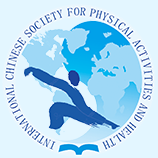Document Type
Abstract
Keywords
Kinesthetic Intelligence, curriculum, physical fitness, physical education, kindergarten
Publication Date
2-2024
Abstract
Purpose: Nowadays, the industrialization of education has led to the shortage of teachers and consequently hindered resource allocation and curriculum optimization. These problems are profound for educators when applying Kinesthetic Intelligence (KI) curriculum for children in early childhood. This paper examines the impact of the current KI course delivery on children’s physical fitness to provide reference for researchers and educators. Methods: Forty-six kids were randomly selected from two intermediate Kindergarten classes and were divided into an experimental group (EG) and a control group (CG). A pre-test of physical fitness was done on eight indices such as stature, weight, throwing, and running. Then, the EG had KI classes, twice a week, 40 minutes for each class, while the CG had traditional classes only. A post-test was done at the end of the experiment, and the data were analyzed through calculating descriptive statistics and performing t-tests and an ANCOVA. Results: The pre-test results showed no significant difference between the two groups in terms of body shape and physical fitness. The post-test results revealed that the CG did not have a significant increase in stature (F = 0.39, p = 0.70) but an increase in weight (F = 5.50, p < 0.01). Regarding the other six indices, distance of throwing tennis ball and time used by walking on a balance beam improved (p < 0.01), the rest had no significant differences (p > 0.05). For the EG group, their statures and weights increased (p < 0.05), and all other six indices showed an improvement (p < 0.01). A comparison between the two groups showed no significant difference in stature and weight, standing long jump, or tennis long throw, while the other four indices were significantly different (p < 0.01). Conclusion: The KI course under the industrialized education generated more positive results than the traditional course in promoting children’s physical fitness, especially fitness of speed, flexibility, balance, and coordination. Further endeavors can be directed to implementing the KI curriculum on a larger scale.
DOI
https://doi.org/10.18122/ijpah.3.1.41.boisestate
Recommended Citation
Luo, Yanli; Gong, Xiaoming; Chen, Yanqing; Xiana, Lianglei; Luo, Jie; and Wu, Kaidi
(2024)
"A155: Research on the Influence of Kinesthetic Intelligence Courses with Industrialized Education on Children's Physical Fitness,"
International Journal of Physical Activity and Health: Vol. 3:
Iss.
1, Article 41.
DOI: https://doi.org/10.18122/ijpah.3.1.41.boisestate
Available at:
https://scholarworks.boisestate.edu/ijpah/vol3/iss1/41
Included in
Exercise Science Commons, Health and Physical Education Commons, Public Health Commons, Sports Studies Commons



